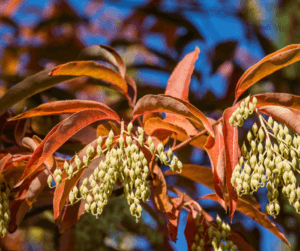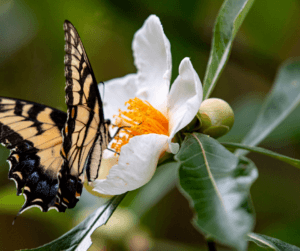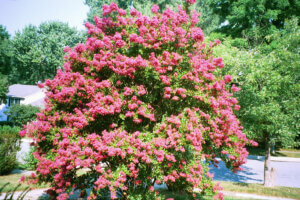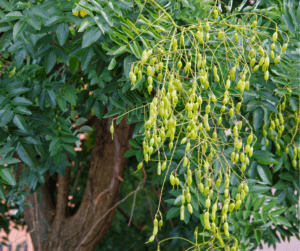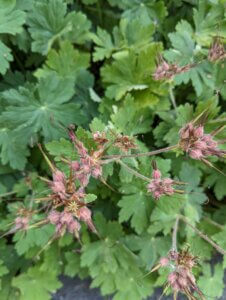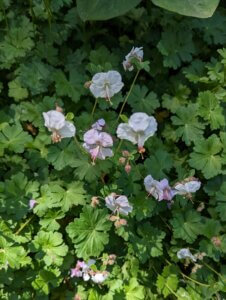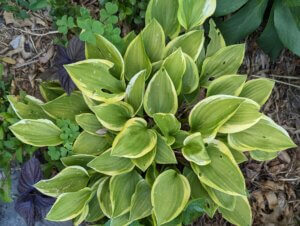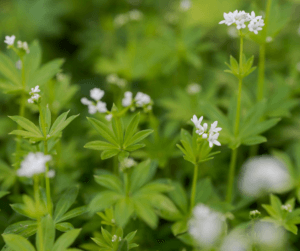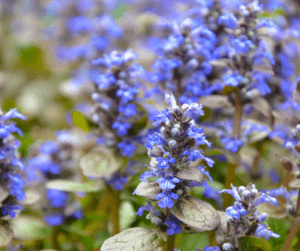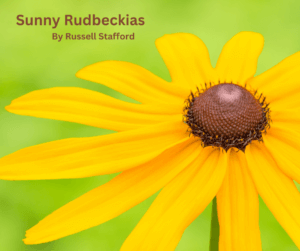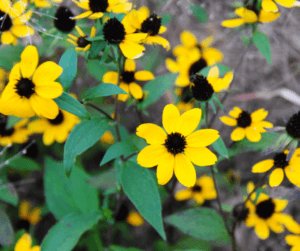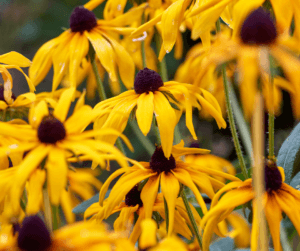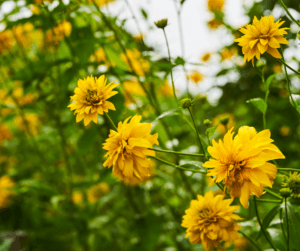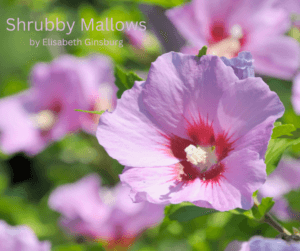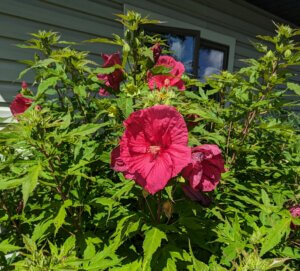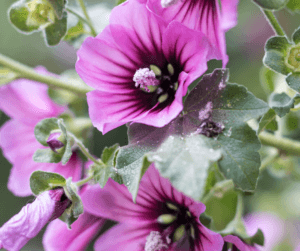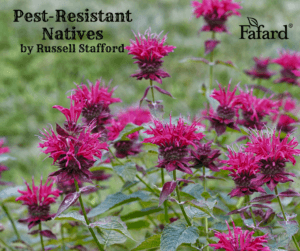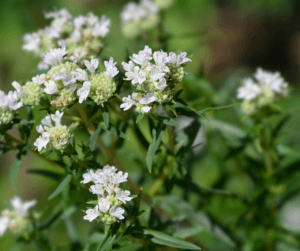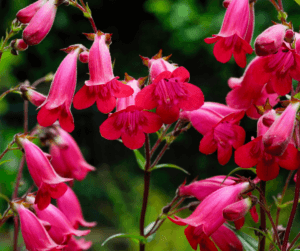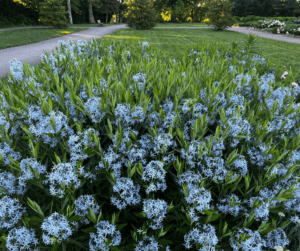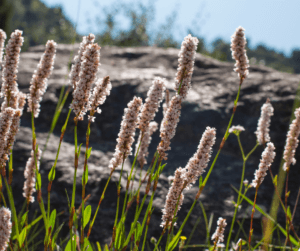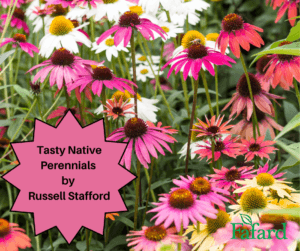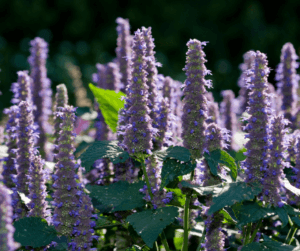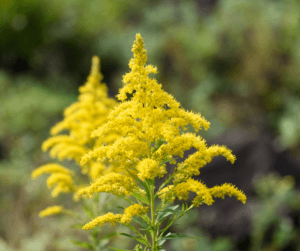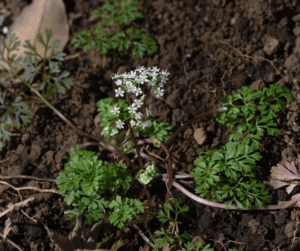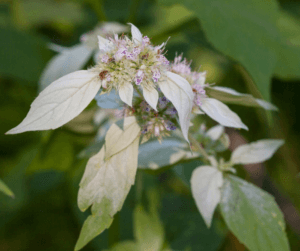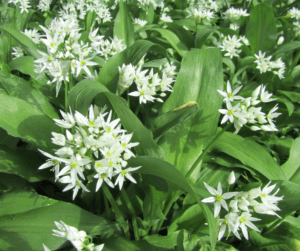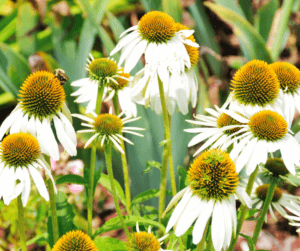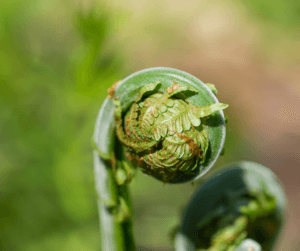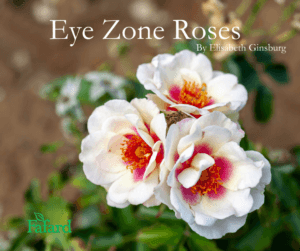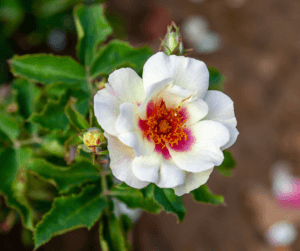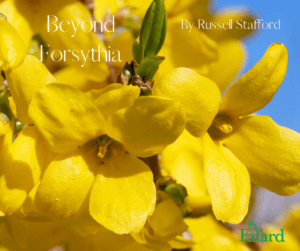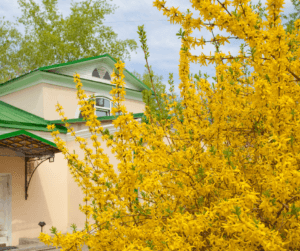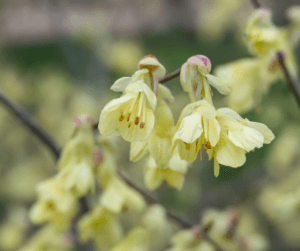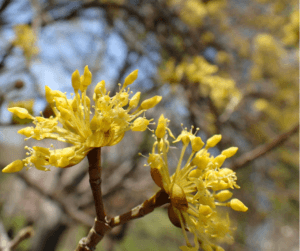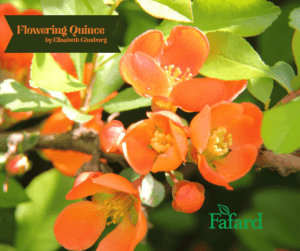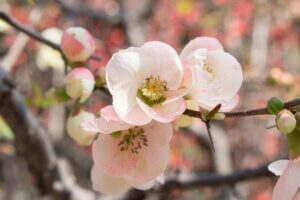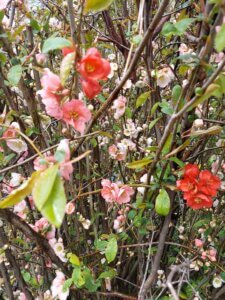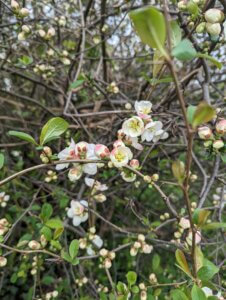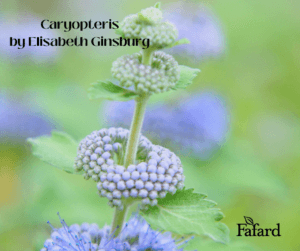
The first time I heard the word “bluebeard”, I thought about the old French fairy tale about a murderous nobleman and his unfortunate wives. A little research proved that caryopteris, the shrub that goes by that nickname, is neither French, nor murderous. In fact, bluebeard, sometimes also known as “blue mist shrub” or ‘blue spirea”, is downright joyful and brings color to the late summer landscape.
Blue, even when it tends to blue-purple is a wonderful color in the garden, and it is especially welcome in late summer and early fall—generally just ahead of the mums and asters– when blue mist shrubs burst into bloom.
The most common forms of blue mist shrub are varieties of Caryopteris x clandonensis, a hybrid of two caryopteris species, Caryopteris incana and Caropteris mongholica. The happy result of the hybridizing process is deciduous shrubs that grow two to three feet tall, with green to gray-green, oval-shaped leaves that taper to elegant points. The leaves, which release a pleasant fragrance when brushed, give away the fact that Caryopteris is a member of the enormous mint or Labiateae family.
The “blue mist” that give Caryopteris species, hybrids and varieties their common name, is made up of clusters of small blue flowers that appear at the ends of the arching stems and in the leaf axils where stems and leaves meet. The “beard” that gave rise to the common name “bluebeard” is actually a small tuft at the base of each tiny petal. Butterflies and other pollinators probably don’t care about the beards, but they do covet the abundant nectar in the tubular blooms. Perhaps best of all, the plants flower on the current year’s growth, so early spring freezes will not prevent later summer flowering.
Gardeners are spoiled for choice when it comes to caryopteris. The classic variety is ‘Longwood Blue’, a hybrid developed at Longwood Gardens in Pennsylvania. Sky blue flowers ornament a plant that grows to be about three feet tall and at least as wide. A little smaller, with darker, richer-colored flowers, ‘Beyond Midnight’ is another x clandonensis hybrid that reaches about 2.5 feet tall and wide. It might work well in large containers.

To light things up further, ‘Sunshine Blue’ sports golden-green foliage to go along with its medium blue flower clusters. It grows to about the same dimensions as ‘Longwood Blue’.
Since blue mist shrubs flower only once per growing season, variegated foliage helps sustain interest before and after bloom time. ‘White Surprise’ is a clandonensis hybrid with green petals edged in white. ‘Snow Fairy’, a variety of the Himalayan species Caryopteris divericata, also sports white-edged leaves.
But what about the vogue for pink in fashion and flowers? Blue mist shrubs are also available with pink “mist” (though they retain the “blue mist” name). ‘Beyond Pink’d’ is a variety of Caryopteris incana, one of the parents of the clandonensis hybrids. It boasts the same aromatic foliage and flower panicles as its blue-flowered relatives, but the bloom clusters are medium pink. Its pollinator-attracting capabilities are the same as those of other caryopteris.
With its moderate size and colorful late summer flowers, blue mist shrub makes a good addition to beds, borders or even container gardens, provided the containers are large enough. It also has the potential to make an excellent deciduous hedge, or shine as a single specimen. The clandonensis hybrids are generally hardy in USDA plant hardness zones five through nine; ‘Beyond Pink’d’ and other incanas are a little less cold tolerant. They and even some of the caryopteris hybrids may die back to the ground during cold winters, but will sprout up in the spring with no ill effects.
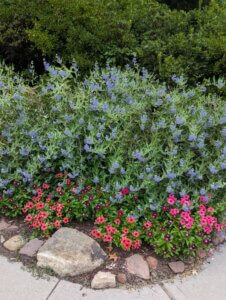
What conditions make for a happy caryoperis? Sunlight is important, and the shrubs need about the same light exposure as roses or tomatoes—at least six hours per day. Like humans, blue mist shrubs dislike wet feet, so amend heavy soil with a product like Fafard Premium Natural and Organic Compost. Mulch the shrubs in doughnut fashion, with the mulch surrounding, but not touching the base of the plants. Water regularly while the new shrub establishes its roots.
If you crave caryopteris when you see a neighbor’s shrub flowering, take heart. The plants can be purchased and planted in early fall. If your pocketbook is subject to other demands right now, rest assured that “blue mist” can still blow your way next spring.




